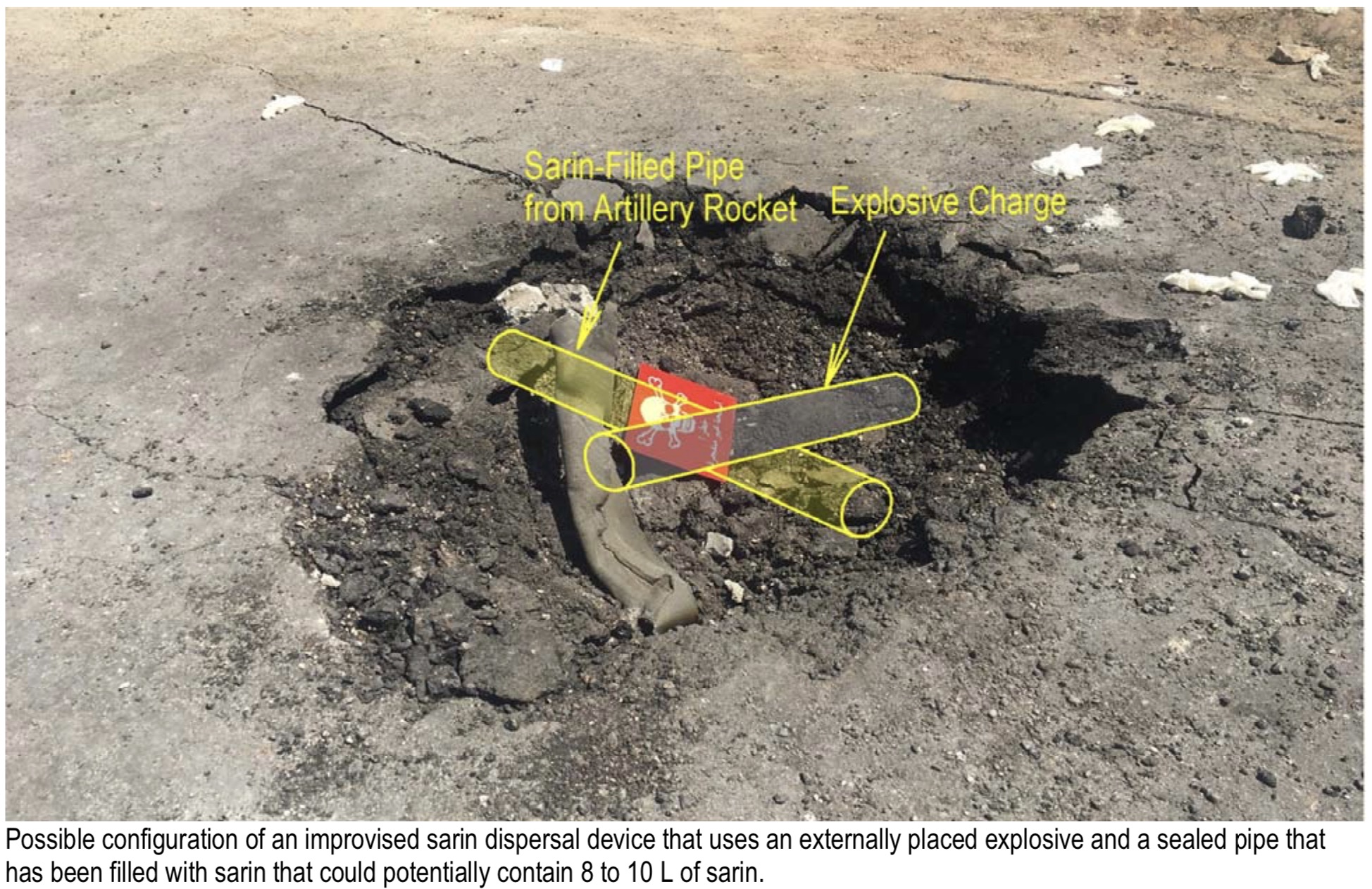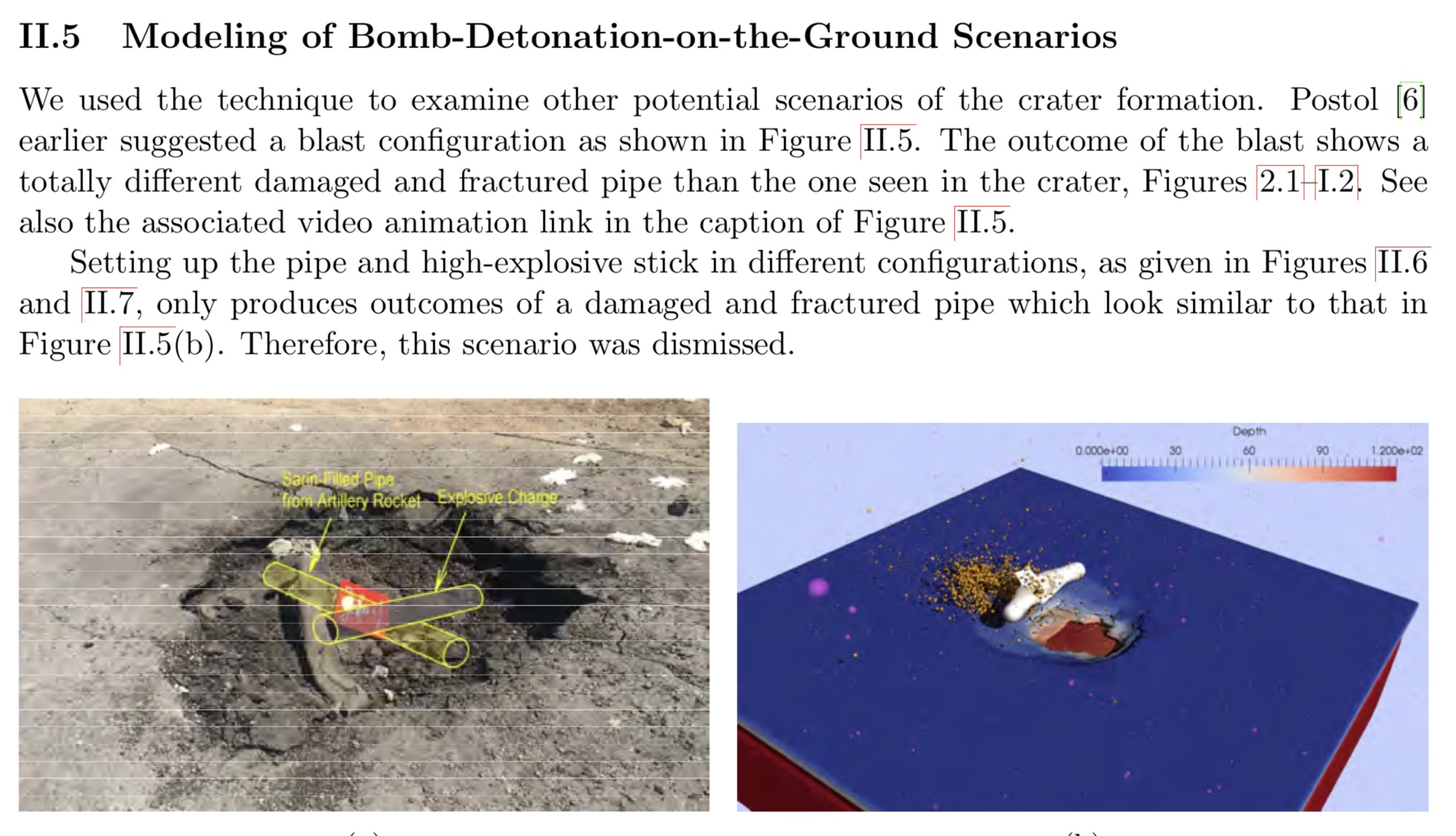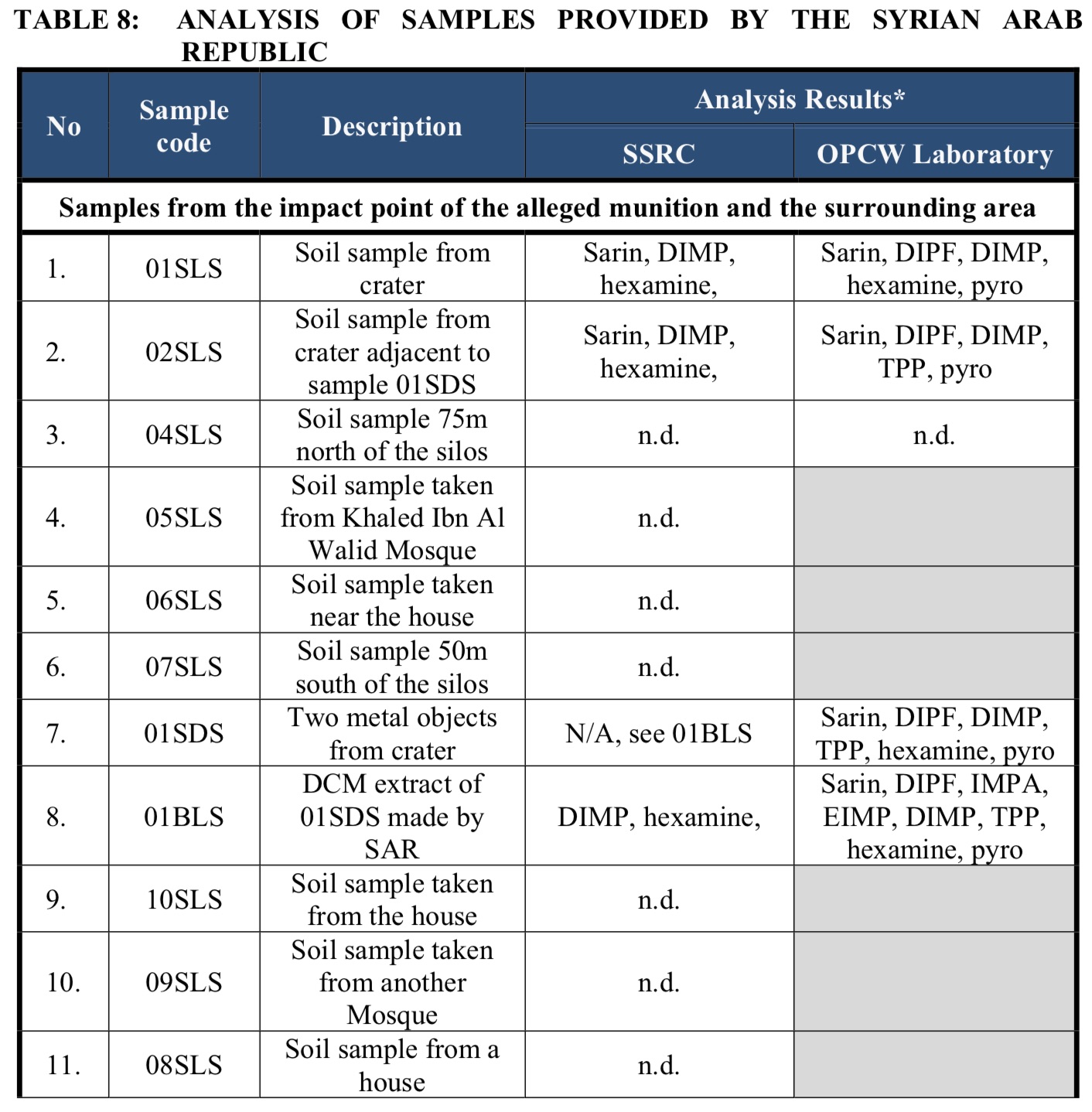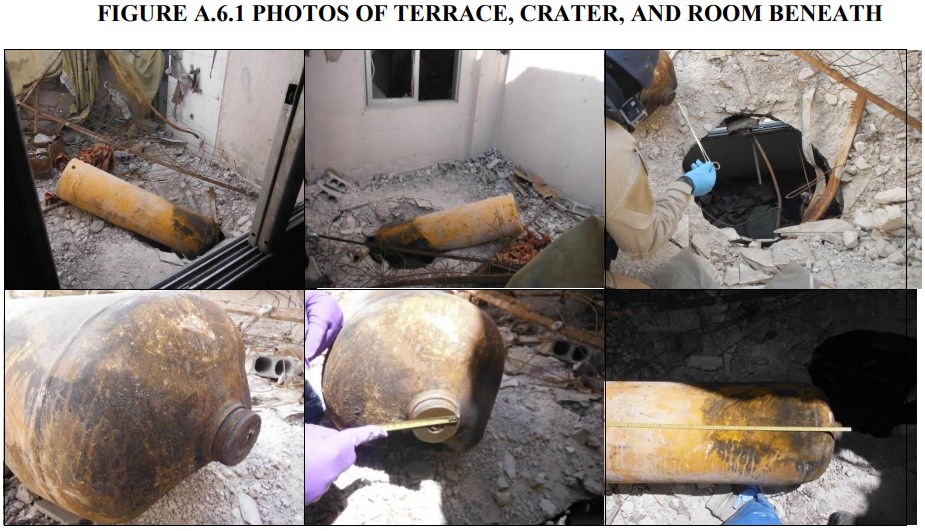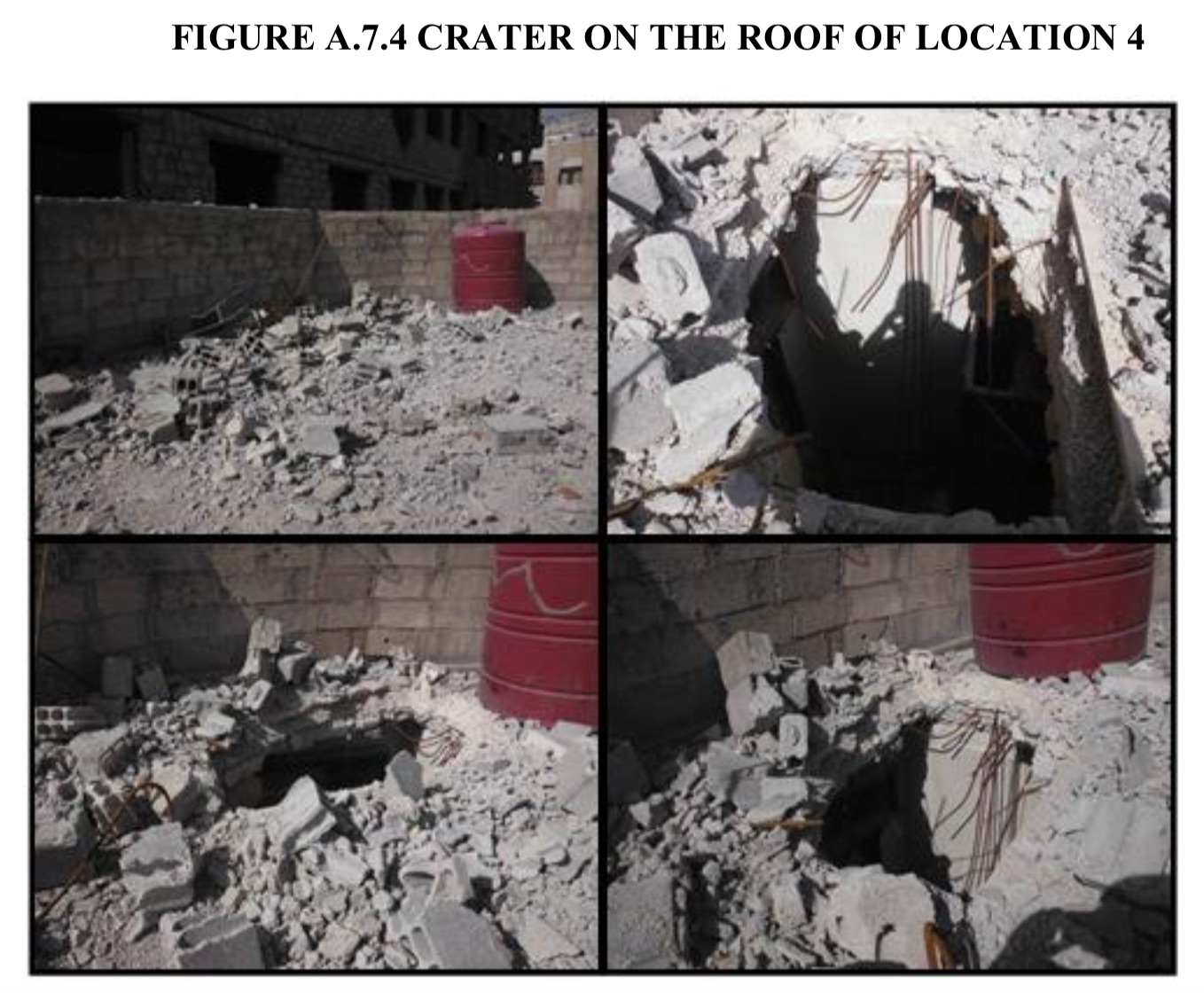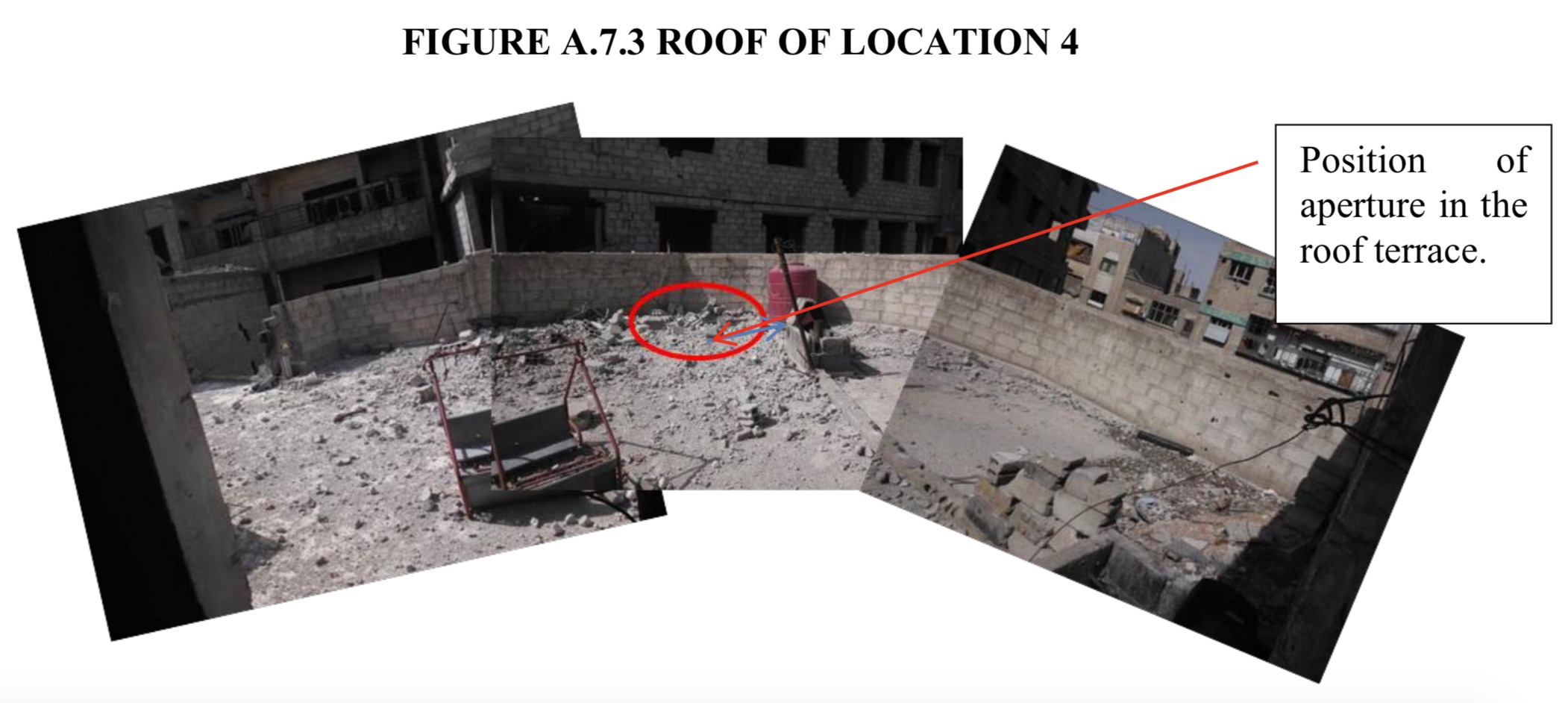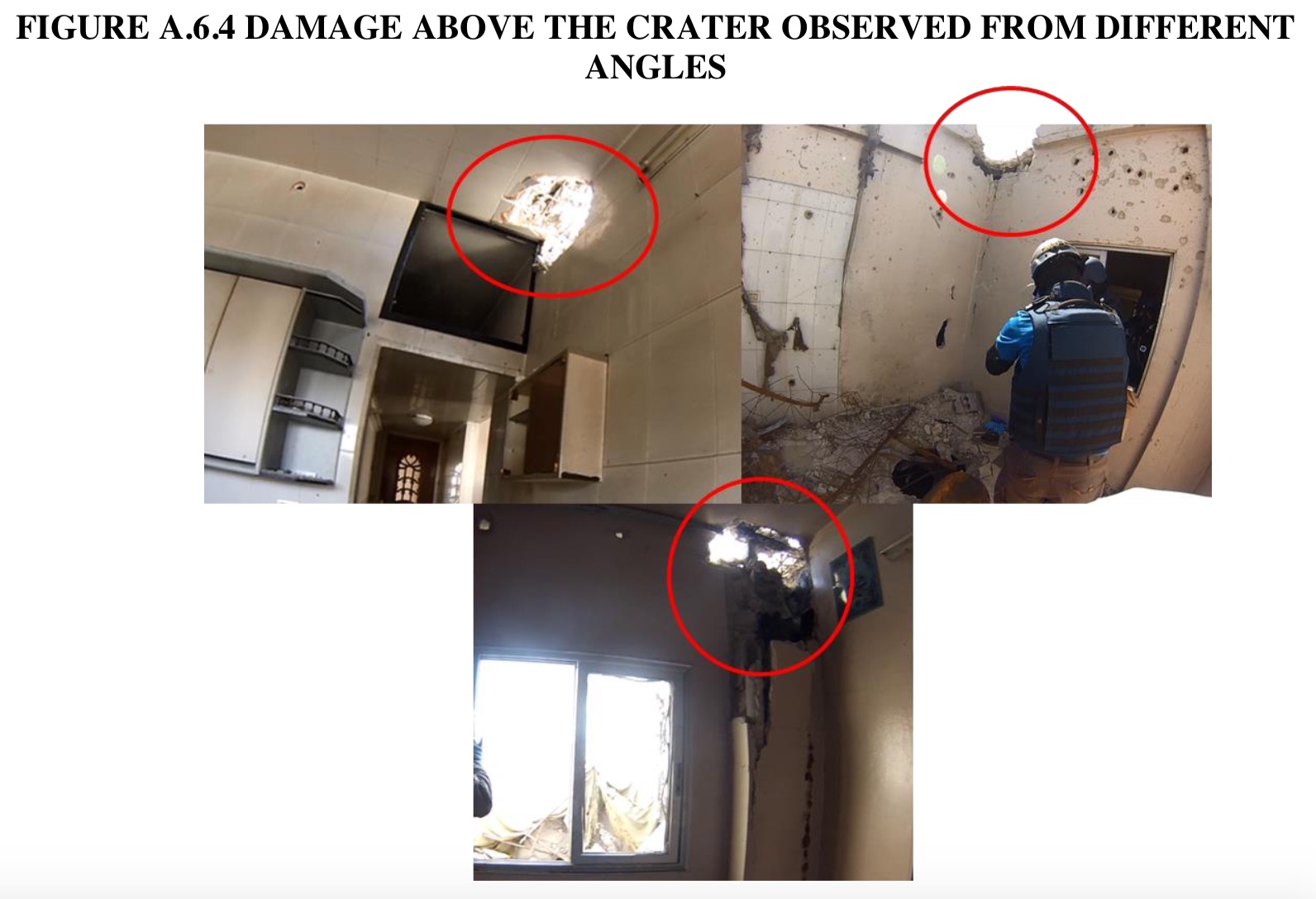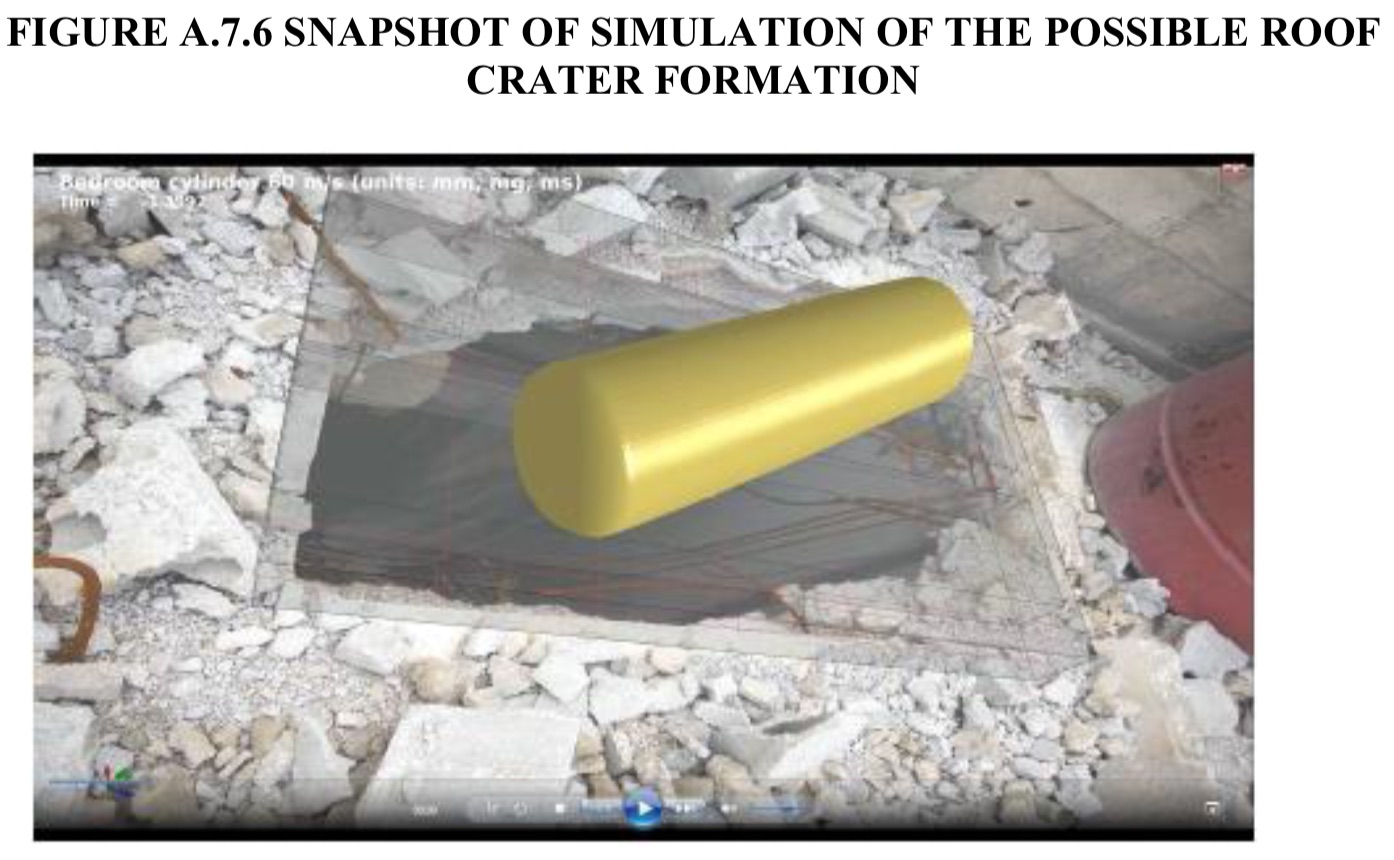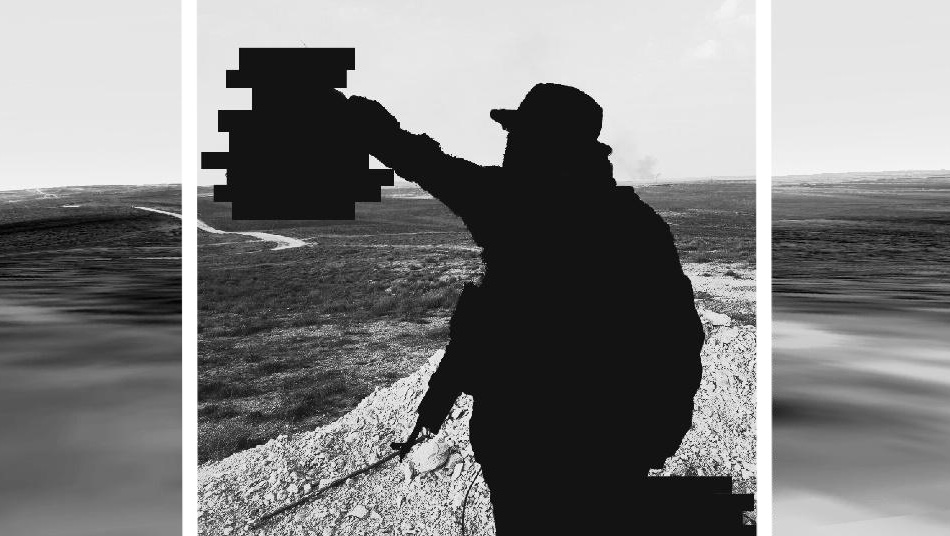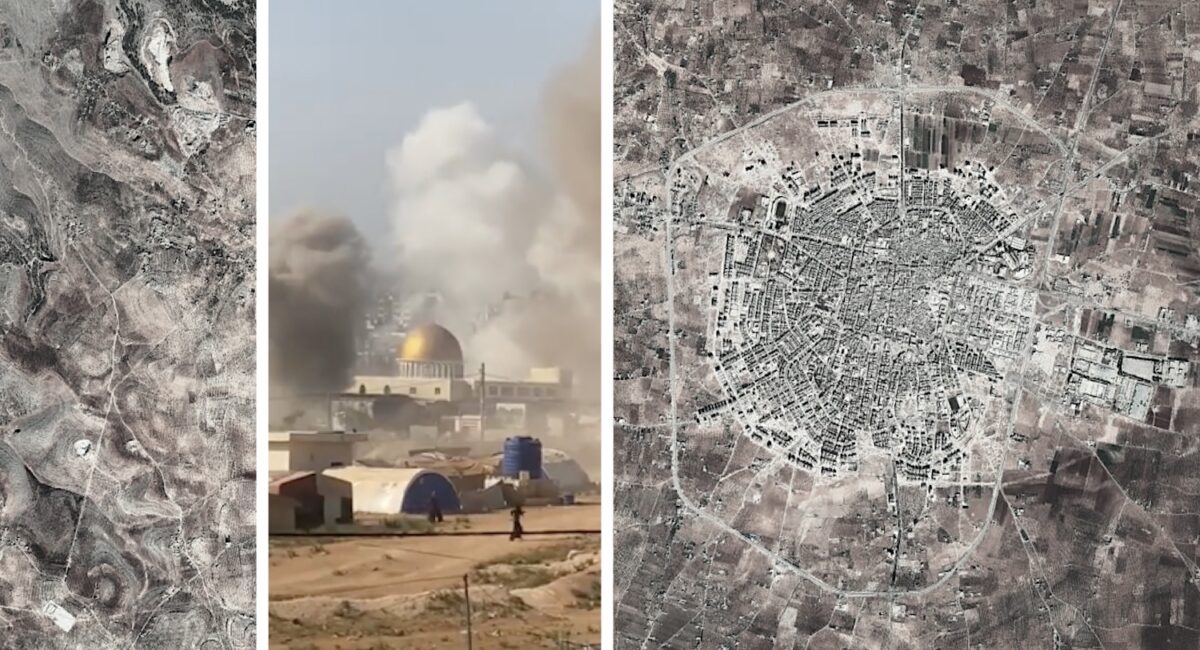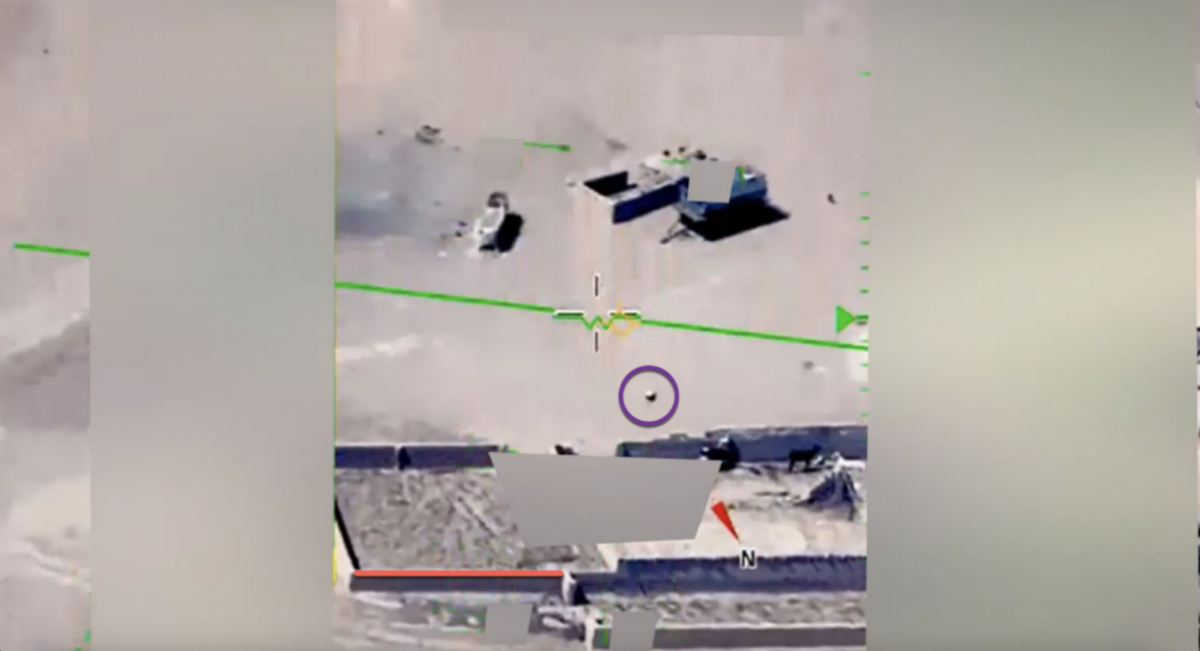Tulsi Gabbard's Reports on Chemical Attacks in Syria - A Self-Contradictory Error Filled Mess
During the 2020 Democratic Party presidential primaries one candidate has stood out from the rest due to her stance on the conflict in Syria. Tulsi Gabbard has drawn fire from commentators and her opponents for her comments on Syria, most recently with one of her opponents, Kamala Harris, dismissing Gabbard as an Assad “apologist”. In the face of criticism of her stance on Syria the Tulsi 2020 campaign website recently published “Reports on Chemical Attacks in Syria”, which states:
There is evidence that both the Syrian government of Bashar al-Assad as well as the armed opposition groups aligned against him have used chemical weapons (CW) during the Syrian war.
However, I remain skeptical about two particular CW attacks, one at Khan Sheikhun on April 4, 2017, and the other at Douma on April 7, 2018. Both attacks occurred in towns under the control of al-Qaeda-linked opposition forces. Both attacks resulted in multiple civilian casualties, and both were immediately blamed on the Assad government. However, there is evidence to suggest that the attacks may have been staged by opposition forces for the purpose of drawing the United States and the West deeper into the war.
Unfortunately, in both instances President Trump launched retaliatory missile strikes against the Syrian government before any investigation had even begun, much less been completed. Rather than wait for evidence, Trump relied on social media posts and unverified sources originating from within rebel held territory, many of which had ties to al Qaeda.
The OPCW also relied on those sources.
Considering the seriousness of the statement, in particular the claim that “there is evidence to suggest that the attacks may have been staged by opposition forces for the purpose of drawing the United States and the West deeper into the war”, and allegations surrounding Gabbard and Syria, it’s important to review the claims made on her campaign website.
Gabbard’s “Reports on Chemical Attacks in Syria” compares the investigations performed by the OPCW into the Khan Sheikhoun and Douma chemical attacks with the work of Dr Theodore Postal, who is described on the website as follows:
Dr Theodore Postol is a professor emeritus at Massachusetts Institute of Technology (MIT) and an acknowledged explosive weapons expert. Postol says the OPCW reports are full of omissions, inconsistencies, and factual errors; he suspects the OPCW itself may be compromised, and the intent of its reports meant to support a narrative, to deceive rather than illuminate.
In a June 2019 interview with The Real News Network on the Douma chemical attack, Postol confirms that he met with Gabbard in Washington to discuss chemical attacks in Syria, specifically the Khan Sheikhoun and Douma chemical attacks.
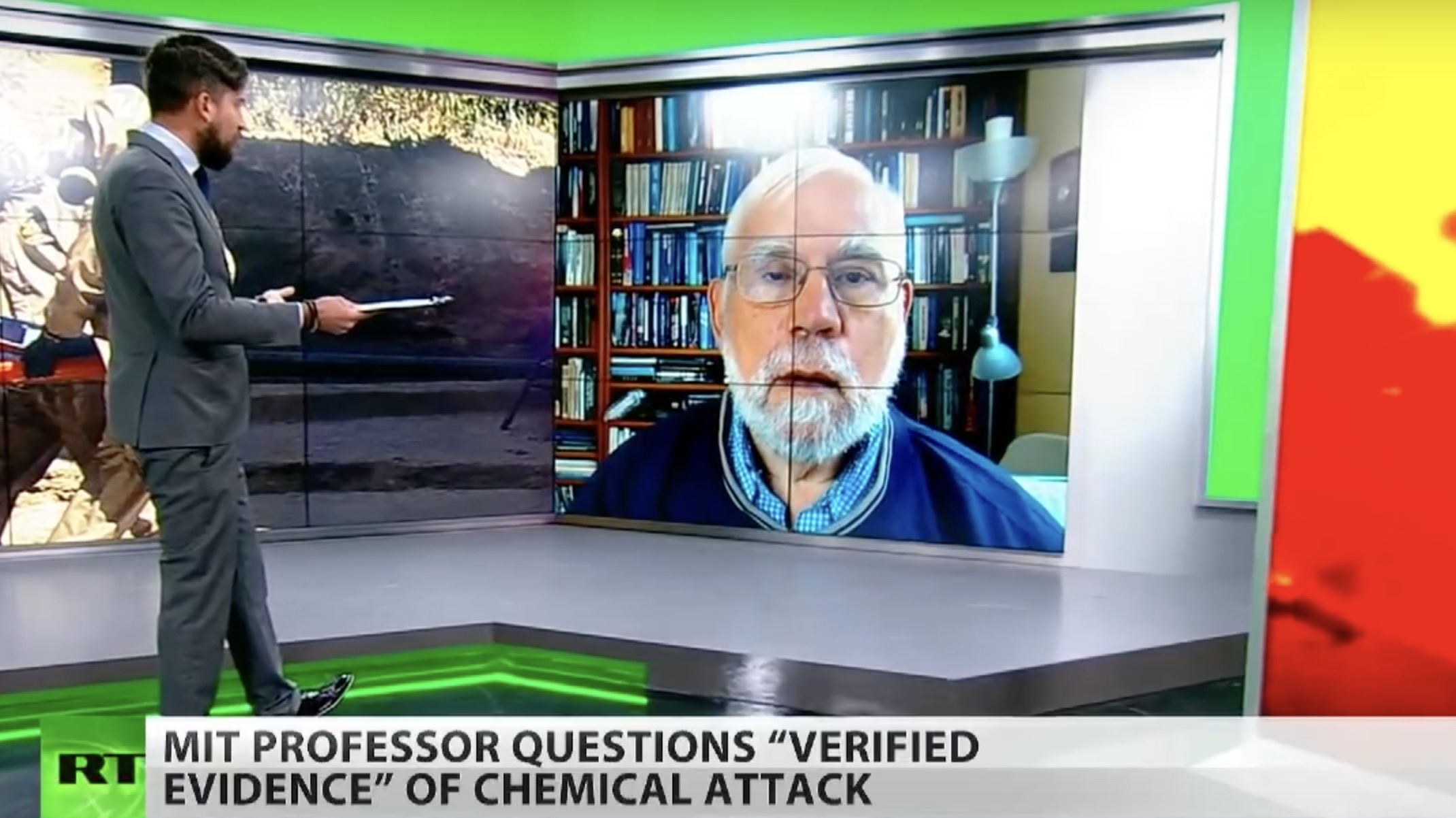
Ted Postol on RT discussing the Khan Sheikhoun Sarin attack (source)
Postol is a controversial figure with regards to the use of chemical weapons in Syria. He first came to prominence with regards to the topic following the August 21st 2013 Sarin attacks in Damascus, where he published a series of claims suggesting the attacks had been staged. He became particularly notorious when due to his own lack of expertise in chemistry he approached the conspiracy theorist YouTuber Maram Susli, also known as Mimi al-Laham, PartisanGirl, Syrian Girl and Syrian Sister, for advice on chemical weapon manufacturing.
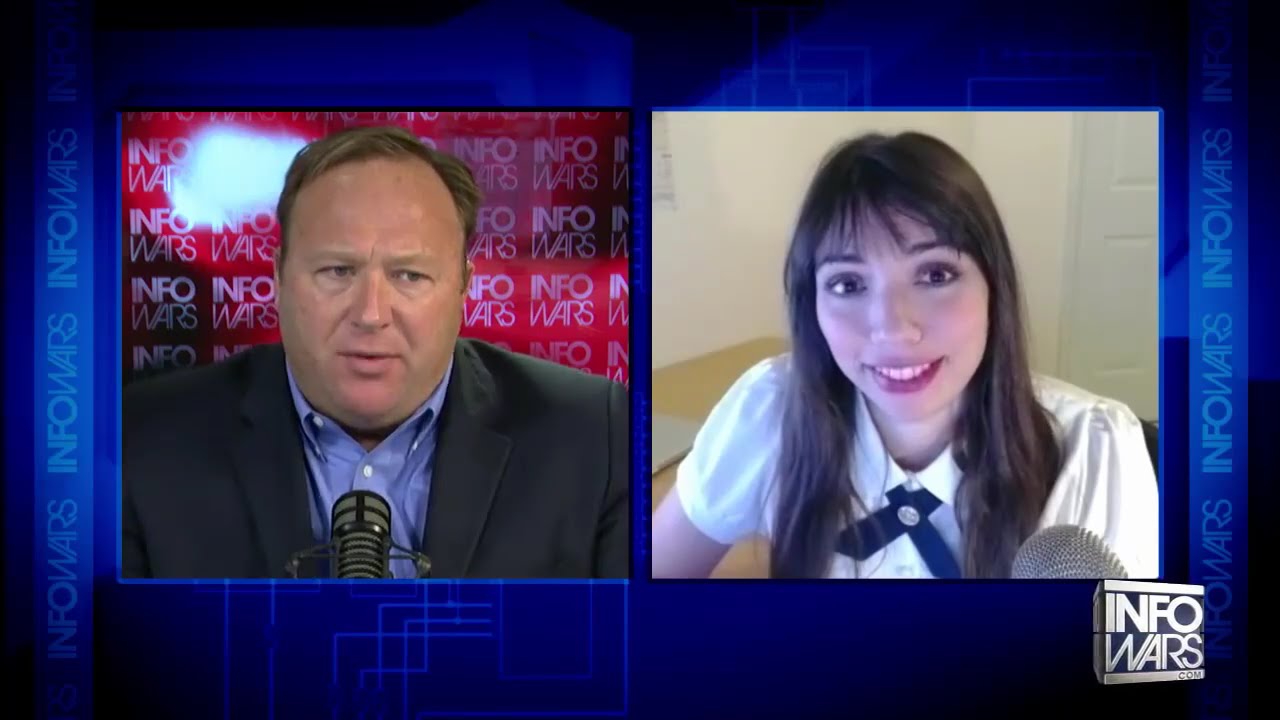
Mimi Al Laham discussing Syria with Alex Jones on InfoWars (source)
Despite only being a chemistry student, Postol chose this Australian YouTuber, who, as he stated in a 2014 interview with the conspiracy theorist Ryan Dawson, “I knew to be a chemist because I was watching her on Twitter. I could see from her voice—I didn’t know her and still don’t know her—that she was a trained chemist”, to be his only expert when it came to the chemistry of the Sarin used in the August 21st 2013 chemical attack, in particular to attack the work of chemical weapons specialist Dan Kaszeta regarding the use of hexamine in the Syrian government’s Sarin recipe.
Writing for Bellingcat, Cheryl Rofer, a chemical weapons specialist with decades of experience in the field, stated the following about Postol’s analysis based on the advice of Susli:
“Postol is operating from a naive set of assumptions, based on limited experience in a first-year chemistry laboratory, presumably the experience of his informant. The result is a wrong-headed approach to the problem and nonsensical demands of Kaszeta. Nothing in Postol’s argument sounds like it was written by a chemist or someone with a working knowledge of chemistry.”
Following the 2013 Sarin attack, further publications from the OPCW confirmed Dan Kaszeta’s original hypothesis about the use of hexamine in Syria’s Sarin recipe, and further debunked Postol’s work with Susli on chemical weapons, which Postol had used repeatedly to call Kaszeta’s claims “fraudulent”.
Postol also published multiple articles about the 2017 Khan Sheikhoun Sarin attack, but again made significant errors. In his report, “The French Intelligence Report of April 26, 2017 Contradicts the Allegations in the White House Intelligence Report of April 11, 2017” Postol claims that evidence released by the French government on the Khan Sheikhoun attack directly contradicts the US claims about the attack, even describing a different attack location and delivery mechanism. A very serious allegation, but one that is based on a basic misunderstanding by Postol.
When reading the report Postol confused French statements about an earlier 2013 attack with the 2017 attack, despite it being made clear in the French document which attack was which. Having conflated two completely unrelated attacks Postol wrote his report attacking the US claims about Khan Sheikhoun. Following reporting by Bellingcat Postol withdrew his report.
Despite these repeated errors, Postol’s work has proven popular with those who wish to attack claims of chemical weapon use in Syria, with Postol appearing on Russian government funded media such as Russia Today and Sputnik, and being cited widely by pro-Assad media and conspiracy websites. Despite this Gabbard chose Postol to be her main source of information for her “Reports on Chemical Attacks in Syria”.
Postol’s lack of care is reflected throughout Gabbard’s”Reports on Chemical Attacks in Syria”. Gabbard begins her section on Khan Sheikhoun with a summary of the OPCW report:
“Khan Sheikhun is a town in the al Qaeda-held province of Idlib in northwestern Syria. On the morning of April 4, 2017 it was struck by a chemical weapons bomb dropped from an aircraft. The bomb left a crater about 1 meter in diameter and ½ meter deep in the middle of a road. Photographs released on social media show a cylindrical bomb casing protruding from the crater. The bomb contained the nerve gas sarin, which dispersed through the town, and killed 89 people.”
It goes on to list a series of what are described as “inconsistencies in the report”, which ironically contains inconsistencies of its own. The first inconsistency is described as follows:
“The size and shape of the crater and the damage to the cylinder is inconsistent with an aerial bomb, but rather with an IED which was placed on the ground, and then detonated.”
This claim is based on Postol’s report “A Quick Turnaround Assessment of the White House Intelligence Report Issued on April 11, 2017 About the Nerve Agent Attack in Khan Shaykhun, Syria“, where Postol states “No competent analyst would miss the fact that the alleged sarin canister was forcefully crushed from above, rather than exploded by a munition within it.” To support his claim Postol includes the following diagram:
What Gabbard appears to be unaware of is Postol himself has now totally rejected this hypothesis, something he announced during a 2018 debate with the author of this article on Khan Sheikhoun. Postol now claims, based on computer modelling, that it was in fact a rocket that caused the crater, completely contradicting his earlier claim cited by Gabbard and his statement “No competent analyst would miss the fact that the alleged sarin canister was forcefully crushed from above, rather than exploded by a munition within it.”
However, it gets worse for Gabbard, as under footnote 5 of her “Reports on Chemical Attacks in Syria” page it actually links to the very report Postol wrote with the analysis that contradicts his earlier claim being cited by Gabbard. So either she hasn’t read Postol’s reports, or she’s happily using information that her own source has debunked.
Gabbard then states the following:
“Videos of smoke plumes show the wind blowing in a different direction than weather reports for the day of the attack, suggesting the videos were taken on a different day.”
This is referencing the following video, posted online about an hour after the attack took place:
The video shows smoke and dust plumes following bombing in Khan Sheikhoun, but it does not point towards the location of the crater where Sarin and bomb remains were found. Multiple munitions were used in Khan Sheikhoun at the time of the attack, and this shows the impacts from the explosive munitions used, resulting in damage to a number of buildings. The above video is featured in a New York Times investigation that examined the Khan Sheikhoun attack, and worked to establish when and where this video was filmed:
The New York Times spoke to the person who filmed this video, who confirmed it was filmed on April 4th, and a second person who filmed another video of the same airstrikes who also confirmed it was filmed on April 4th. In addition, the New York Times confirmed the location the video was filmed from, which allowed them to use details in the video to confirm it was filmed in the morning. They also confirmed the smoke and dust plumes lined up with damaged buildings that appeared on satellite imagery of Khan Sheikhoun taken after April 4th.
In addition, there are are multiple witnesses interviewed by the OPCW and journalists who confirm where the airstrikes occurred and open source information documenting the impact sites of the airstrikes. If this video was not filmed on April 4th it would require that not only one, but two fake videos were pre-recorded, multiple witnesses lied to the OPCW and journalists in a co-ordinated fashion about the airstrikes, and a co-ordinated social media campaign was arranged to spread fake information from multiple organisations and individuals immediately after the airstrikes took place. There has also been no evidence presented by anyone, not Postol, Gabbard, Syria, Russia, the OPCW, or independent investigators, that indicate the airstrikes and damage caused by the airstrikes occurred at an earlier date.
The Gabbard page goes on, stating “Photographs indicate that the crater had been tampered with” and that a dead goat had been moved. No-one is denying items and objects in and around the crater were moved, but this is not evidence the scene has been faked. We know, for example, samples were taken by various groups, and provided to the OPCW. In fact, even individuals acting for the Syrian government were able to access items and remove them from the crater, with those objects listed in the OPCW Fact Finding Mission report on Khan Sheikhoun. Below are some of the items provided to the OPCW by Syria listed in the report, including metal objects from the crater:
The Gabbard page also states the following about Khan Sheikhoun:
“Photographs show persons standing around the bomb casing wearing only gloves and dust masks, which would not be sufficient to protect them from sarin residue in the crater.”
This claim has been used by many conspiracy theorists and pro-Assad bloggers to claim Sarin was not used in the attack. Ignoring the fact multiple samples from the attack site, including samples provided by the Syrian government, show Sarin was used, this claim is based on a misunderstanding about the nature of Sarin.
Chemical weapons can be put into two categories, persistent, and non-persistent. Persistent chemical weapons remain in the environment for long periods of time, while non-persistent, as the name suggests, do not. A number of studies have been done on the persistency of Sarin. The 2013 Norwegian Defence Research Establishment (FFI) report “Chemical warfare agents and their interactions with solid surfaces” defines chemical warfare agents as “considered persistent if it remains able to cause casualties for more than 24 hr to several days after it was released, whereas a non-persistent one dissipates or loses ability to cause casualties after 10 to 15 minutes,” and uses the following chart to demonstrate the persistency of various chemical warfare agents:
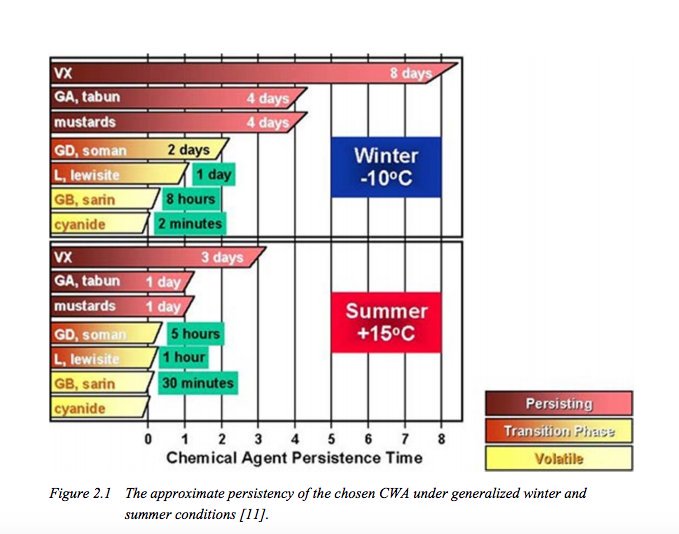
The temperature range that Khan Sheikhoun experiences around the time of year the Sarin attack took place would be around 7°-23° Celsius, depending on the time of day, according to historic weather simulations, resulting in a particularly low persistency. While the Sarin may have been detectable in samples, based on what we know from scientific literature on Sarin persistency it would not be unbelievable that people could stand in and around the crater while relatively unprotected hours after the attack took place.
Finally, Gabbard’s page states “There are also inconsistencies of timing, where hospital records show victims arriving before the air strike had supposedly occurred.” This inconsistency was addressed in the OPCW-UN Joint Investigative Mechanism report published on Khan Sheikhoun, where it stated:
“Certain irregularities were observed in elements of the information analysed. For example, several hospitals appeared to have begun admitting casualties of the attack between 0640 and 0645 hours. The Mechanism received the medical records of 247 patients from Khan Shaykhun who had been admitted to various health-care facilities, including survivors and a number of victims who eventually died from exposure to a chemical agent. The admission times noted in the records range from 0600 to 1600 hours. Analysis of the records revealed that in 57 cases, patients had been admitted to five hospitals before the incident (at 0600, 0620 and 0640 hours). In 10 of those cases, patients appear to have been admitted to a hospital 125 km away from Khan Shaykhun at 0700 hours, while another 42 patients appear to have been admitted to a hospital 30 km away at 0700 hours. The Mechanism did not investigate those discrepancies and cannot determine whether they are linked to any possible staging scenario or are the result of poor record-keeping in chaotic conditions.”
The OPCW-UN JIM concluded that an aircraft dropped a munition on Khan Sheikhoun resulting in the release of Sarin, and “The irregularities described in the present annex are not of such a nature as to call into question the aforementioned findings.”
Gabbard also fails to address key pieces of evidence from the OPCW investigations, including the remains of a filling cap from a Syrian chemical bomb, and Sarin with chemical signatures linking it to the manufacturing process used by the Syrian government to produce Sarin being detected in samples provided both by The White Helmets and the Syrian government, instead preferring to rely on claims that are already debunked by the claims’ own author, and claims that appear to be based on ignoring key evidence, claims made by the OPCW, locals, journalists, and other investigators, and dismissing multiple witness statements supported by multiple sources of evidence. What’s most disturbing is Gabbard’s claims mirror those used by conspiracy theorists and war crime denialists, and promoted by the Russian and Syrian media and governments in attempt to undermine allegations of chemical attacks in Syria.
Moving onto the Douma chlorine attack, Gabbard’s “Reports on Chemical Attacks in Syria” states the OPCW position:
“Douma is a town near Damascus under the control of an al-Qaeda-linked opposition group. On April 7, 2018, one year after the attack at Khan Sheikhun and shortly after President Trump announced his intention to withdraw from Syria, Douma was attacked with chlorine gas bombs that were dropped from a helicopter onto the roofs of multi-story apartment buildings, where they exploded, propelling chlorine gas down into the building, and killing the people inside.”
This is immediately followed by a paragraph that is filled with basic errors:
“Photographs taken by OPCW investigators show a yellow chlorine gas cylinder lodged partway into a hole it had punched in the reinforced concrete roof of the building, with the broken ends of the rebar bent downward into the room below. The hole is several times wider than the diameter of the gas cylinder. There are also photographs of similar hole in the roof of an adjacent building, where another yellow gas cylinder was found lying on a bed on the top floor.”
The statement “The hole is several times wider than the diameter of the gas cylinder.” is totally untrue, something that can be clearly seen in photographs from the OPCW FFM’s report:
The claim “There are also photographs of similar hole in the roof of an adjacent building, where another yellow gas cylinder was found lying on a bed on the top floor.” is also incorrect. The OPCW FFM does feature the following image showing a similar hole in the roof of an adjacent building:
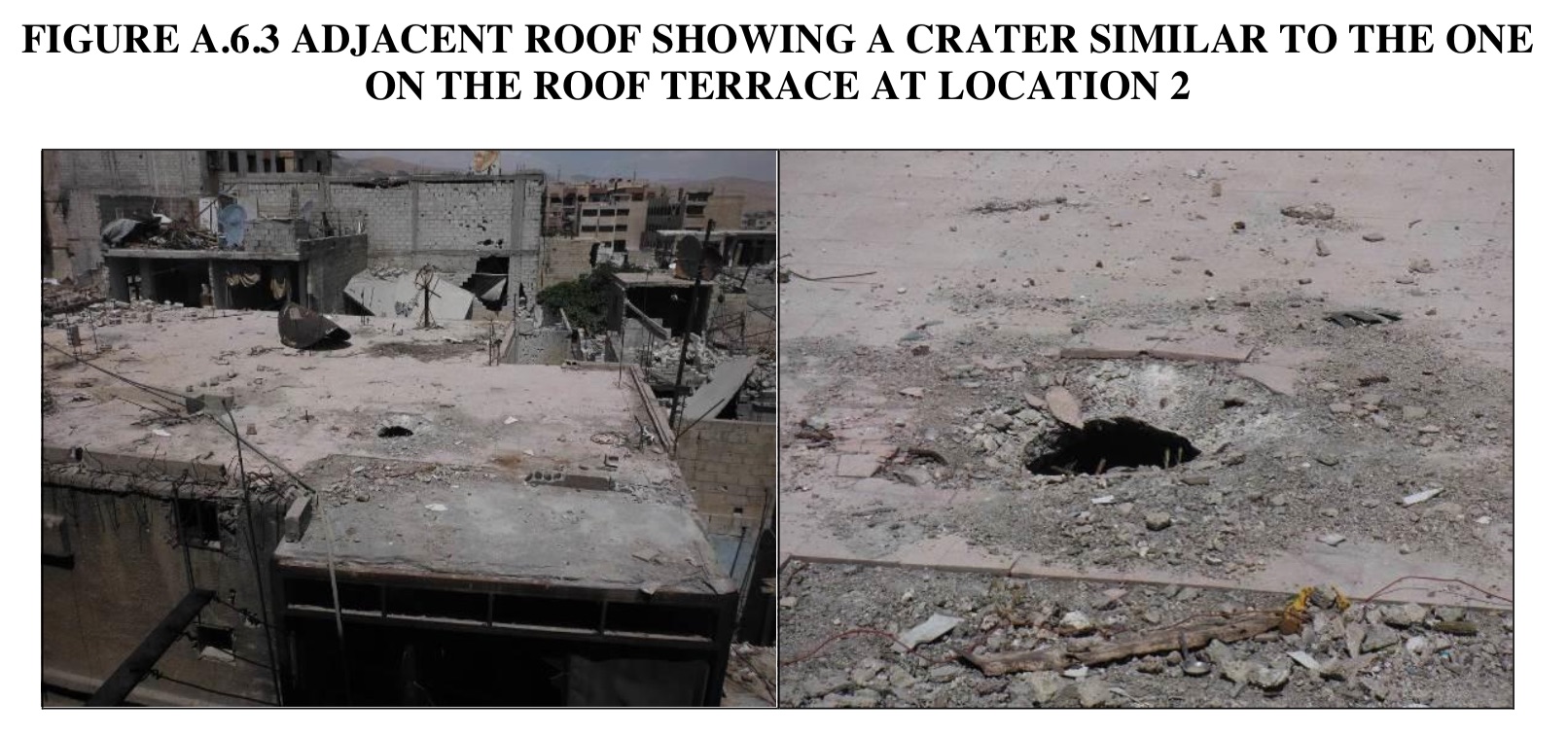
The OPCW report also includes the exact location of both sites, showing they are 400 meters apart, not next to each other as the Gabbard page claims.
Moving on from its erroneous description of the impact sites, it starts with its first “inconsistency”
“A leaked engineer’s assessment, which was completely omitted from the OPCW report, contradicted the report’s findings.”
This refers to a report leaked to the “Working Group on Syria, Propaganda and Media” reportedly written by Ian Henderson. The Working Group claimed the following about the author:
“We have confirmed that as the engineering expert on the FFM, Henderson was assigned to lead the investigation of the cylinders and alleged impact sites at Locations 2 and 4.”
However, the director general of the OPCW, Fernando Arias, stated that in fact Henderson was not the lead investigator:
“It should be noted that, the time of the FFM deployment in Douma in 2018, this staff member was a liaison officer at our Command Post Office in Damascus. As such, and as is customary with all deployments in Syria, he was tasked with temporarily assisting the FFM with information collection at some sites in Douma.”
He then added
“The document produced by this staff member pointed at possible attribution, which is outside of the mandate of the FFM with regard to the formulation of its findings. Therefore, I instructed that, beyond the copy that would exclusively be kept by the FFM, the staff member be advised to submit his assessment to the IIT, which he did, so that this document could later be used by the IIT.”
The Fact Finding Mission (FFM) cannot attribute blame for attacks. Previously, this was the role of the OPCW-UN JIM, but its renewal was vetoed by Russia, and in its place the Investigation and Identification Team (IIT) was created at the OPCW. These are the reasons the leaked report was not part of the OPCW report on Douma.
Seemingly based on the leaked report, Gabbard’s page makes the next claim:
“A cylinder dropped from a helicopter would not have lodged partway into a hole punched into the roof, but would have penetrated the roof and possibly one or more floors below.”
In the OPCW FFM report on Douma analysis was performed of both impact sites, and the above claim was directly addressed:
“Observing the damage on the roof above the crater, the experts were able to provide an explanation of the cylinder not penetrating completely through the aperture. It can be seen that there was a large impact on the roof and walls above the balcony. The impact would decrease the velocity of the falling cylinder and changed its trajectory while hitting the concrete floor of the balcony causing a hole in it, but without sufficient energy to fall through it.”
The impact location described above can be seen in photographs taken by the OPCW at the site:
Tulsi 2020 moves onto the next claim:
“The size of the hole was too big. An explosive device in the shape of a cylinder dropped from height would have created a hole just slightly bigger than its own diameter.”
This claim is somewhat confusing, as there’s two impact sites, with two holes. As shown above, at one site the gas cylinder didn’t penetrate the roof, so it’s unlikely to be referring to that site. A much larger hole was seen at the second site, but the OPCW suggested this was caused by the munition landing lengthways:
The statement “An explosive device in the shape of a cylinder dropped from height would have created a hole just slightly bigger than its own diameter.” is also confusing, as there’s no indication any explosives were part of the devices used in Douma. At best, this statement needs further explanation because as it stands it’s incoherent.
Gabbard continues to focus on holes in the next statement:
“The hole in the roof at Douma is consistent with an artillery rather than an airstrike, which suggests that the cylinder was placed in an opening created by an earlier artillery attack, and its contents released into the building below.”
It seems this must be referring to the site with the smaller hole, and if it had been hit by an earlier artillery strike we would expect to see significant fragmentation damage around the hole and on the walls surrounding the impact point. However, this is not visible, so the damage is simply not consistent with an artillery strike.
Next, Gabbard shifts focus:
“The official OPCW report failed to include the discovery of a nearby weapons lab that contained several identical yellow gas cylinders, which clearly suggests that the terrorists themselves were in possession of chemical weapons devices.”
This is completely untrue, the OPCW FFM in fact dedicates several pages of the report to the visit to this site in Annex 8 of their report, and concludes:
“Based on the chemicals and the equipment present, as well as the lack of protective mechanisms against toxic chemicals, it is highly unlikely that chemical weapons agents were being manufactured in the location described. With the chemical ingredients present, or suggested to be present, it is not possible to manufacture either nerve agents or vesicants. Some of the chemicals observed could be used to manufacture at least two of the Schedule 3A chemicals, hydrogen cyanide and cyanogen chloride, both highly toxic blood agents (not found on the location). As these are either low boiling liquids (hydrogen cyanide boils at 26 0C) or gases (cyanogen chloride boils at 130C), it would make it very difficult to handle these chemicals, particularly in the absence of any personal protective equipment, abatement systems or appropriate storage equipment.
On the other hand, there is high consistency between the equipment and chemicals present in terms of production of explosives. All of the chemicals observed are common in the production of explosives and propellants.”
The Syrian military and media has a long history of presenting explosive manufacturing facilities as rebel chemical weapon labs, and this seems to be another example of them doing just that.
Tulsi Gabbard concludes her “Reports on Chemical Attacks in Syria” with the following:
“The bottom line is that I and thousands of my brothers and sisters-in-arms went to war in Iraq based on false intelligence and lies from our leaders—our president, our military officials, and our political leaders. We should have been skeptical then, but we weren’t. The cost in blood and treasure was thousands of lives lost and trillions of hard-earned taxpayer dollars down the drain. I believe it is my duty, as a veteran and member of the House Committees on Armed Services and Foreign Affairs, to make sure such false intelligence and lies are never again used to justify use of American military force.”
While there’s certainly a case to made for this, it cannot be made with your own fake intelligence, dodgy dossiers, and lies.
